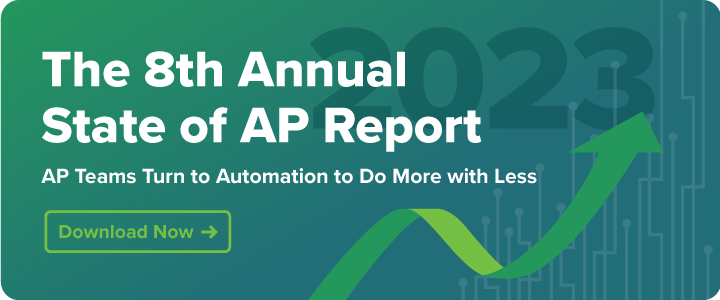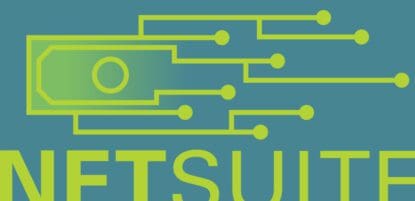There are many ways businesses can choose to pay their vendors. Increasingly, people are turning to electronic payment (ePayment) formats because they’re faster, cheaper, and safer than traditional check payments. ACH is a popular electronic payment option for businesses. In this article, you will learn about ACH payments, their associated benefits, and four steps businesses can take to set up ACH payments.

What are ACH Payments?
An ACH payment is a type of automated electronic payment that transfers money from one bank to another through the Automated Clearing House (ACH) Network, an electronic network for batch processing transactions. The rules and guidelines for ACH payments are set forth by its governing organization called NACHA (the National Automated Clearing House Association). Their work makes it possible for businesses to send direct deposits, direct payments, and electronic checks – all common examples of ACH payments.
Types of ACH Payments
There are two primary ways to send ACH payments. One is to utilize ACH.com, a third-party ACH processor that provides efficient ACH transactions for businesses across the United States. Alternatively, ACH payments may be set up directly through your organization’s bank. This requires the ability to transmit NACHA formatted bank files directly to the bank for processing.
What are the Benefits of ACH Payments?
According to the recent State of the AP Report, 32% of surveyed companies make over half of their payments via ACH. This is likely because many firms find that ACH payments offer multiple benefits compared to other payment types. These benefits include:
It’s Paperless:
A paperless AP process lends itself to better record-keeping by digitally storing all documents. Furthermore, it doesn’t require any printing, signing, or mailing. Erasing these opportunities for delays makes for smoother, more reliable processing, all the while making your AP processes compatible with hybrid and remote work environments.
It’s Fast:
ACH payments typically take less than 2-3 days to transfer. In some instances, they can even move the same day! For companies looking to decrease their DPO or improve relationships with strategic vendors, ACH payments are a great way to ensure payment is received on time.
It Improves Reconciliation and Cash Flow Projections:
Because the payment moves so quickly, there is no need to account for checks that have been lost in the mail or received but not yet cashed. Digital payments can also streamline payment reconciliation, by reducing human error in the process. Additionally, since AP teams can minimize the amount of checks that are unprocessed or lost, finance teams can better manage cash flow in their ERP system.
It’s Reliable:
ACH payments are made safely and deposited reliably. Moving money directly from bank to bank leaves little room for error or fraud.
It Saves Money:
ACH payments are often much cheaper to make than check payments and some other forms of electronic payments.
How Much Does It Cost to Set Up ACH Payments?
Setting up ACH payments is relatively inexpensive. Current numbers come out to around $0.89 per ACH transaction. In contrast, check payments cost about $1.50 for just the transaction. When factoring costs associated with the additional labor required by check payments, checks tend to cost organizations $5.00 each. For organizations looking to make the switch, ACH can result in about 82% cost savings per invoice paid.
4 Steps to Setting Up ACH
If you’d like to start making ACH payments and realize the above benefits, here are four steps to get started.
1. Select an ACH processor
First, you’ll need to decide whether to use a provider like ACH.com to process transactions or work directly with a bank. You can also set up ACH transactions through an AP platform like MineralTree, which even handles vendor onboarding and management.
AP automation platforms enable teams to pay each vendor in their preferred format, without adding an additional process into your AP workflow. This makes it easier than ever to add ACH to the payment mix. Additionally, the platform securely stores vendor information, decreasing fraud risks for your team.
2. Onboard vendors
Gathering all relevant banking details from vendors who would like to receive ACH payments is the next step to set up ACH payments. This information includes banking details as well as identifying information such as an EIN or driver’s license. It may also include a canceled or voided check. If you use a platform to set up ACH processing, vendors may be able to enter all this information directly into the system by completing a form.
3. Prepare applications for underwriting
Before sending information to the bank or ACH processor, you will need to verify that all the required information is properly formatted. For example, NACHA files must be formatted per NACHA specifications with separate line entries for each piece of information. Pieces of information include the account number, routing number, file header and trailer, batch header record with service class code, and entry detail record.
4. Send applications to underwriter
Once all vendor information is properly formatted, you can send the application to the underwriter for processing. This usually takes about a week or less, depending on the processor.
How Automation Can Streamline ACH Payments
AP automation platforms can help organizations realize even more benefits from their ACH payments. These include:
Fraud Protection:
ACH payments in general are resistant to fraud because funds travel directly between banks. But AP automation provides an additional layer of protection as the process has fewer ways for humans to intervene. Additionally, it stores bank information for you, reducing security and fraud risks.
Scheduled Payments:
Automating payments means they are rendered when you want. Schedule payments within the AP automation platform so that your team no longer has to remember to send payments in real-time. Streamlining this piece of the workflow makes payments faster and easier than ever before, requiring fewer man-hours from AP staff.
One AP Workflow:
Manual payment workflows add convoluted processes for each added payment method. Meanwhile, AP automation easily enables your team to pay each vendor in their preferred method without creating new workflows or processes for the team.
More Visibility into Payments:
Providing more visibility into the payment process can free up time for your team, fostering better relationships with suppliers. About 38% of those surveyed spend over 6 hours a week answering vendor questions. Of these supplier questions, 83% are related to invoice payment status. An automation platform centralizes all the information associated with an ACH payment into a single, easy-to-view location. Buyers with a vendor portal can even enable their suppliers to log in to a self-service system where they can access status updates on invoices and payments.
Fewer Errors:
Automated systems are not subject to fatigue or errors. AP automation presets payments to ensure they happen exactly as intended, without having to worry about human errors.
ACH Automation Best Practices
When using an automation platform, it’s best to spend some time cleaning up your ERP since you will need to import vendor files from your existing ERP system. Before doing this, it’s a good idea to ensure those existing files are complete and up to date. This will save a lot of time down the road as you initiate processes within the platform.
How MineralTree Can Help
MineralTree offers an automation platform with end-to-end AP processing capabilities. When it comes to ACH payments, we help onboard vendors, guiding them through the process and gathering all relevant information.
The MineralTree software stores ACH information at the vendor record and organizes it so that it’s easy to pay vendors. And while most automation companies have to prepare a 24-hour batch file to render ACH payments, MineralTree uses a quicker delivery system that makes it possible to pay vendors the same day if initiated early enough. If you’re ready to start making ACH payments and would like the added benefit and ease of an AP automation platform, give MineralTree a try. Request a free demo today to learn more.



